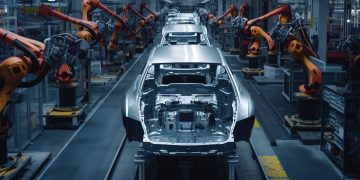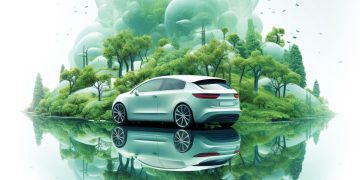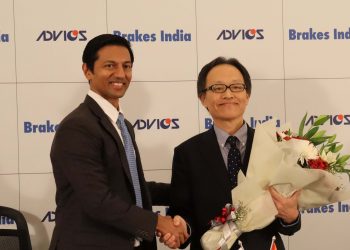The automotive industry in India is experiencing a transformational shift, and at the forefront of this change is the remarkable journey of Electric Vehicles (EVs). With a growing focus on sustainability, energy efficiency, and reducing greenhouse gas emissions, EVs have emerged as a game-changing force in India’s mobility landscape. Through this article, we intend to showcase the incredible story of Electric Vehicles in India, tracing their path from inception to their current status, and examining the opportunities and challenges on the horizon.
Early Stages: The Dawn of Electric Mobility in India
The first notable attempts at EV manufacturing in India can be traced back to the 1970s and 1980s when a few domestic automobile companies experimented with electric vehicles. However, due to technological limitations, high costs, and limited public interest, these early efforts didn’t achieve widespread success. In 1996, EVs had their humble beginnings in India when a Lucknow-based company developed the first electric three-wheeler, as reported by the financial express. Following this, between 2000 and 2007, various automobile brands introduced a series of electric scooters and bikes. However, between 2005 and 2015, most EV companies faced challenges and sold out, resulting in a period of stagnation in the industry.
Policy Support: Driving the EV Revolution
Government support has been instrumental in propelling the growth of Electric Vehicles in India. A series of policy measures and incentives have been introduced to encourage EV adoption and promote the development of the electric mobility ecosystem.
The government’s focus on promoting clean energy and reducing pollution led to the introduction of various policies and initiatives to support EV adoption. In 2013, the National Electric Mobility Mission Plan (NEMMP) was launched with the aim of achieving 6-7 mln Electric Vehicles on Indian roads by 2020. This marked a significant step towards building a sustainable mobility ecosystem in the country.
One of the key initiatives was the Faster Adoption and Manufacturing of (Hybrid & Electric Vehicles FAME) scheme, launched in 2015, and later revised as FAME India Phase II. Under this scheme, financial incentives were provided to consumers buying electric two-wheelers, three-wheelers, and four-wheelers. Subsidies were also extended to manufacturers to promote the indigenous production of electric vehicles and components.
In 2015, there were positive signs of slow yet steady EV adoption among Indian consumers, particularly with E-rickshaws, especially in the NCR region. With government support, E-rickshaw sales soared, with more than five lakh units sold in 2016-17, expanding their popularity to states like Punjab, UP, West Bengal, Bihar, and Haryana. The unexpected success of E-rickshaws surprised everyone with massive sales year after year.
By 2021, the Indian EV market was conservatively valued at
` 5,400 Cr. The sales of EVs in India have been on a steady rise, with battery electric vehicle sales reaching almost 50,000 units in 2022, a fourfold increase from the previous year. This growth has attracted both domestic and global players, as companies like Citroën, Volvo Cars, and Audi have launched fully electric vehicles in India, expressing confidence in the sector’s potential.
Additionally, various state governments have introduced their own incentives, such as reduced road tax, registration fees, and toll charges for Electric Vehicles. Some states have even provided land at concessional rates to set up charging infrastructure, creating a favourable environment for EVs to thrive.
The Advent of Indian EV Startups
The resurgence of Electric Vehicles in India has been catalysed by the emergence of homegrown EV startups. These startups have played a crucial role in driving innovation and making EVs more accessible to the masses. One of the pioneers in this space was Reva Electric Car Company, founded by Chetan Maini in 1994. Reva launched its first electric car in India in 2001, making it one of the early players in the Indian EV market. In 2010, Reva was acquired by Mahindra and Mahindra, a significant milestone in the Indian EV industry and renamed as Mahindra Reva Electric Vehicles Pvt Ltd. The Mahindra Group brought its resources and expertise to further enhance the development and production of electric vehicles.
Following in the footsteps of Reva, several other startups have entered the market with a focus on electric two-wheelers, three-wheelers, and electric buses. Startups like Ather Energy, Ola Electric, and Okinawa have made significant strides in developing technologically advanced and sustainable electric vehicles.
Government Fleet Electrification and E-Mobility Initiatives
To set an example and lead the way towards a cleaner future, the Indian government has been actively promoting the adoption of Electric Vehicles in its own fleet. Several government departments and public-sector undertakings have started replacing their existing vehicles with Electric Vehicles. Additionally, the government has initiated various e-mobility projects in cities and public transportation systems. The introduction of electric buses in several cities and the integration of electric rickshaws in urban transport have helped in reducing emissions and promoting last-mile connectivity.
The Need for EV Skills Development
As the EV industry undergoes continuous evolution, the demand for skilled professionals is also on the rise. Skill development plays a vital role in fostering the industry’s growth and success, as it equips the workforce with the necessary knowledge and expertise to tackle the intricate challenges associated with EVs. Among the primary advantages of skill development in the EV sector is the generation of new job opportunities. As India aims to achieve 30% e-mobility in the automotive industry by 2030, it is crucial to address the shortage of skilled EV talent. The rapid growth of the EV sector demands a highly skilled workforce capable of designing, manufacturing, and maintaining electric vehicles. However, the current course curriculum in India’s engineering institutes may not adequately cater to the specific skill requirements of the EV industry. To bridge this gap, Automotive Skills Development Council (ASDC) has taken proactive measures to equip India’s automotive workforce with EV infrastructure knowledge.
ASDC’s Commitment to Skill Development for EV
ASDC, the first sector skill council of India, is dedicated to promoting skill development in the automotive industry. In collaboration with Bolt.Earth, ASDC has undertaken initiatives to provide free courses on EV-related topics. ASDC offers Electric Mobility Nanodegree (six-month programme with DIYguru) for engineers, and Dakshta training (with Autobot India and MG Motor) on AI and EVs. Autobot Academy’s ‘EV Engineering: Architecture and Components’ programme prepares job seekers for the EV tech sector. Toyota Kirloskar’s ‘xEV SHIKSHA’ programme creates awareness about EV technology benefits for customers and the environment. These courses cover a wide range of subjects, including HEV Design and EV Charging Fundamentals, enabling individuals to enhance their knowledge and skills in the EV domain. By offering these courses, ASDC is empowering the automotive workforce to adapt to the evolving industry landscape and contribute to the growth of the EV sector in India.
The Road Ahead: A Sustainable and Electric Future
Despite the few challenges, the future of Electric Vehicles in India looks promising. The commitment of the government through various incentives, subsidies, and policy support, the enthusiasm of EV startups, and the efforts of organisations like ASDC are driving the transformation towards a sustainable and electric future. Advances in battery technology have led to improved range and charging infrastructure, alleviating concerns about EV viability. Major automobile manufacturers are investing heavily in electric mobility, with an expanding range of EV models hitting the market.
A sustainable and electric future also encompasses renewable energy integration and smart grid solutions. Electric vehicles can become a crucial component of the energy ecosystem, providing storage capacity and balancing grid demand. Investments in research and development, infrastructure, and skill development will be crucial to ensure that India becomes a global leader in electric mobility.
Conclusion
The incredible journey of Electric Vehicles in India has shown immense potential and laid the foundation for a greener and more sustainable future. As the country continues to embrace electric mobility, we are well on our way to fuelling a cleaner and brighter future for generations to come.



























































